As interest has been shown in some of the smaller, humbler clubs and courses when I’ve posted photo tours in the past I thought I might give you a flavour of what else is around in my corner of North-West England. There are today over 100 courses in what constitutes the county of Cheshire for golfing purposes and there is huge variety in what is on offer. I intend to revisit some of my old haunts (and a few in other counties) when time permits during the coming months. I hope even the lowliest will have something to commend them to you.
Knutsford is one of Cheshire’s loveliest small towns. Its name derives from an association with ‘Knut the Dane’ but there are no surviving buildings from that period. There is plenty of Georgian architecture, but the most striking are the many art nouveau buildings, private houses and public buildings, which give a certain distinction (or notoriety – depending on your taste) to the town. It has managed to retain many of its traditional shops. Its only disadvantage is that you are on the flight path in and out of Manchester Airport:
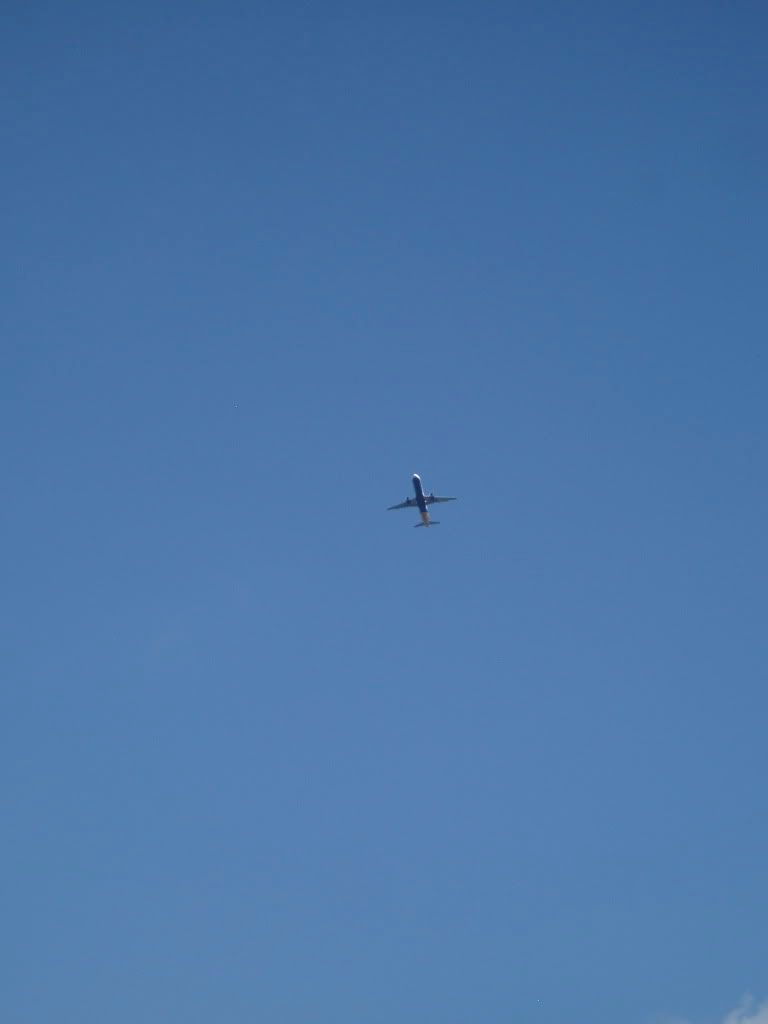
There are a number of historic estates around Knutsford, notably Tabley and Arley, but the seriously big estate is Tatton. It belonged to the Egerton family. Although that family has now died out and the estate is run by the National Trust, the Egertons were important in allowing golf to be played on the estate from 1891.
The original course was just inside the Knutsford gate, very conveniently sited for members, who had easy access. George Lowe of Lytham laid out the first course. Although the course could not be seen from the Hall with the naked eye, when the 3rd Baron Egerton succeeded as the club’s landlord in 1909, it was deemed that the golfers should move further away from the hall (at his wife’s suggestion, it is believed). Support from the Egertons was forthcoming. They provided fencing to keep the deer, sheep and cattle of the estate off the new course, had no objection to the removal of trees (apart from an established woodland) and were agreeable to the construction of sand bunkers, where none had been allowed on the original course. News that the golfers had to move, and to move swiftly, came as something of a shock. CW Taylor (Captain in 1910) was charged with setting up the new course on the new land. On his first wander over towards this tract he encountered Lawrence Speakman, a schoolmaster and son of a founding member, who played most days of his school holidays. Speakman had already learned of the essential move to the new land and had formulated a plan for a new course. His plan was very logical and, after consultation with Lowe, it was agreed to go ahead with Speakman’s course.
Today, Knutsford Golf Club is unusual in that it has a 10-hole course. It is essentially a 9-hole course with separate 9th and 18th holes, playing to around 6,300 yards with a par of 70 and sss of 70. It is little different from Speakman’s course.
I have to say it is a very lovely place to play golf. It is not an architectural masterpiece, but the situation is charming and handsome, and the membership is friendly. There are many, many trees, but for the most part there is plenty of width. Occasionally specific trees are used very effectively to control strategy on a hole. Only on the 9th do you feel intimidated by them.
1. 401 yards par 4
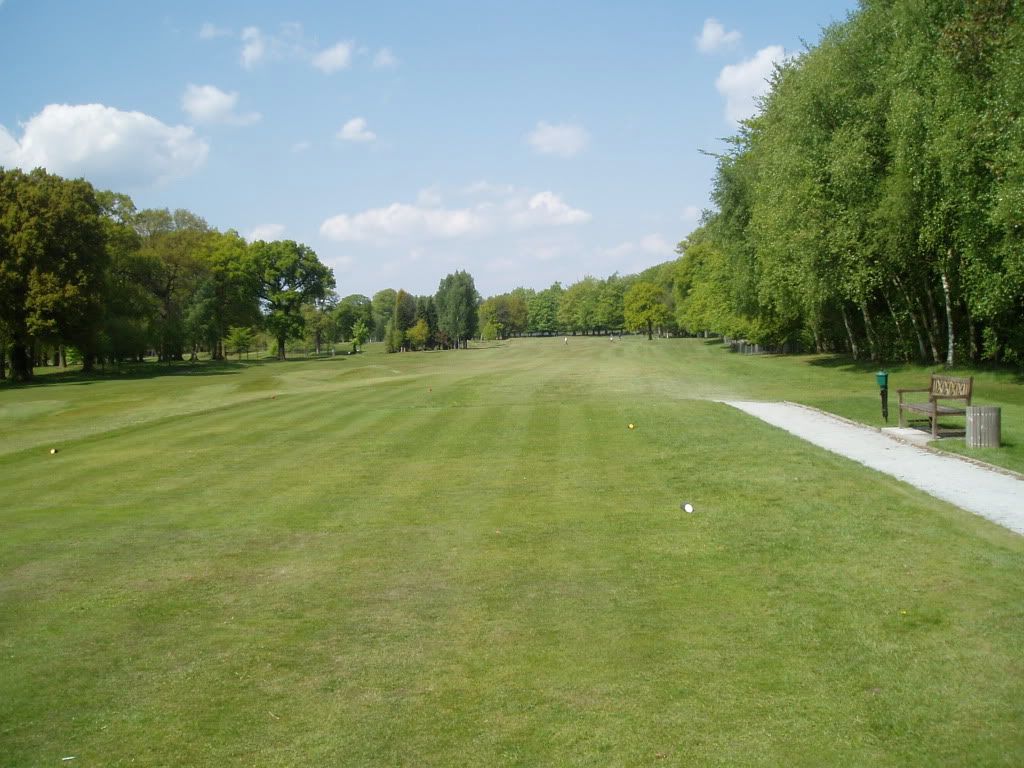
An inviting start with the chance to open the shoulders. Out-of-bounds lurks on the right all the way along the hole.
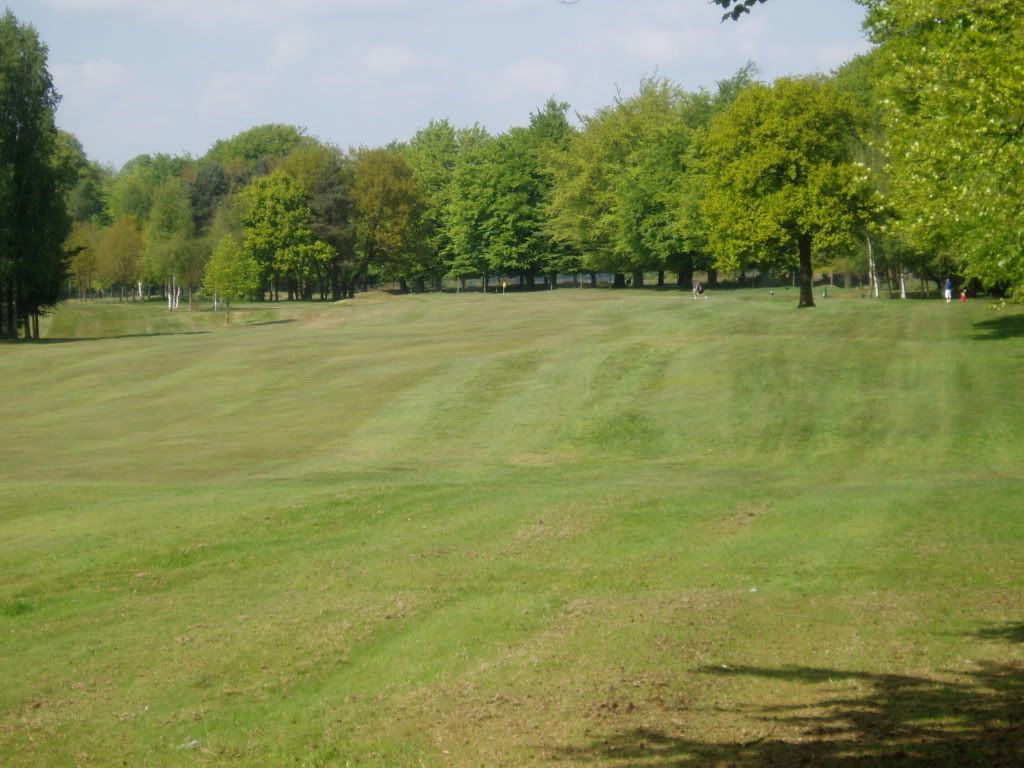
A shallow gully should be carried easily by the competent player, but that gully will complicate matters later, on the approach to the 6th green.
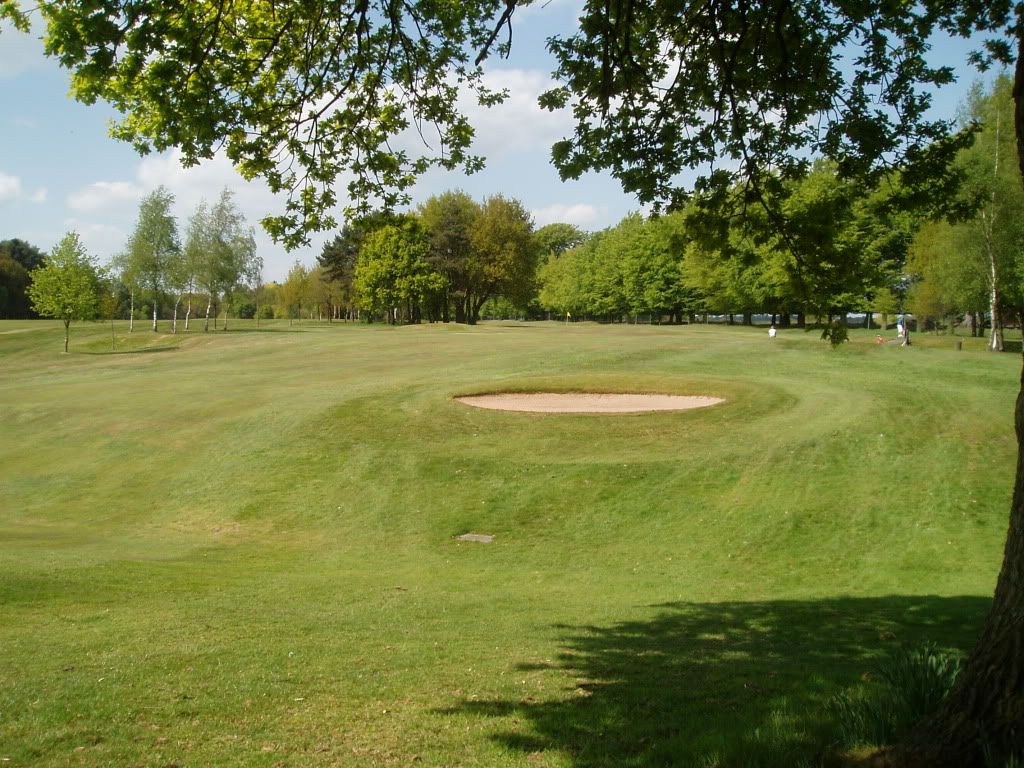
A second gully interrupts the fairway shortly before the green, calling for a no-nonsense approach shot.
2. 426 yards par 4
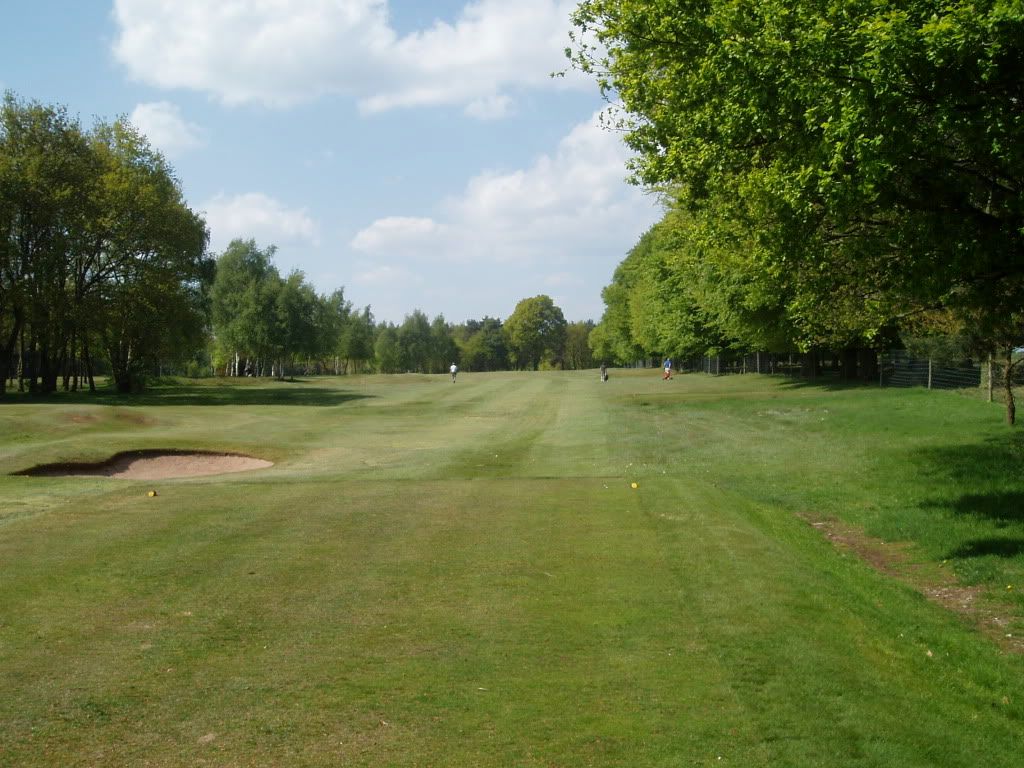
Again there is trouble down the right, but there is plenty of room.
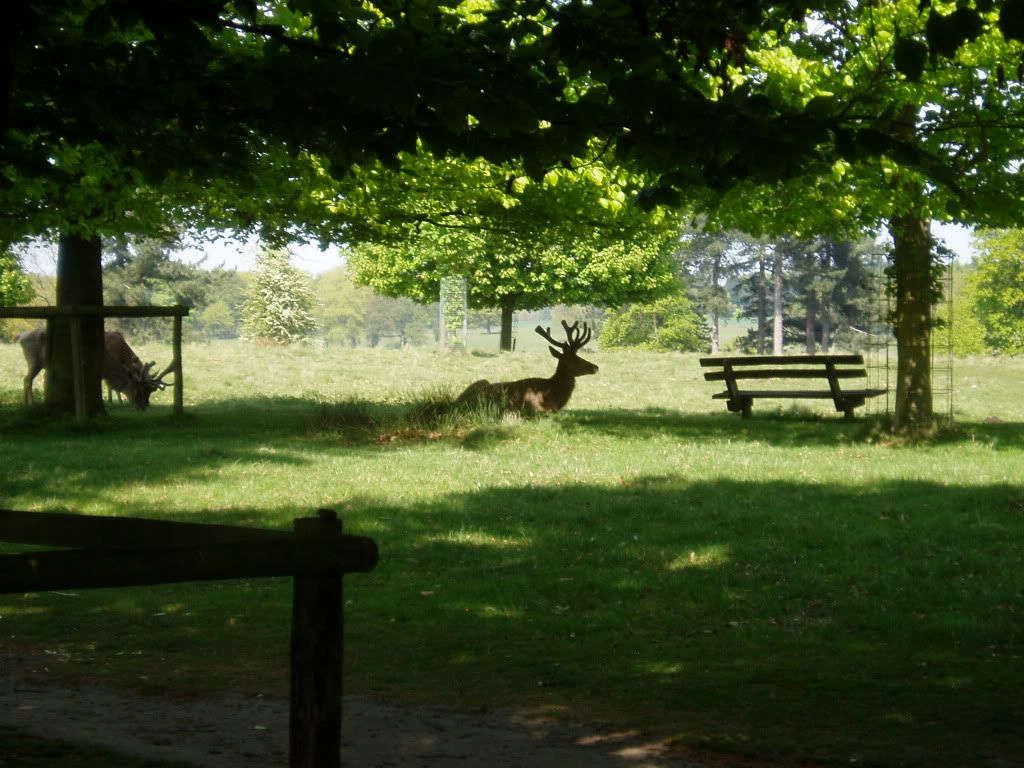
These lovely creatures seem unconcerned about the threat from sliced golf balls! They also seem entirely oblivious to walkers in the park, even those with loose dogs.
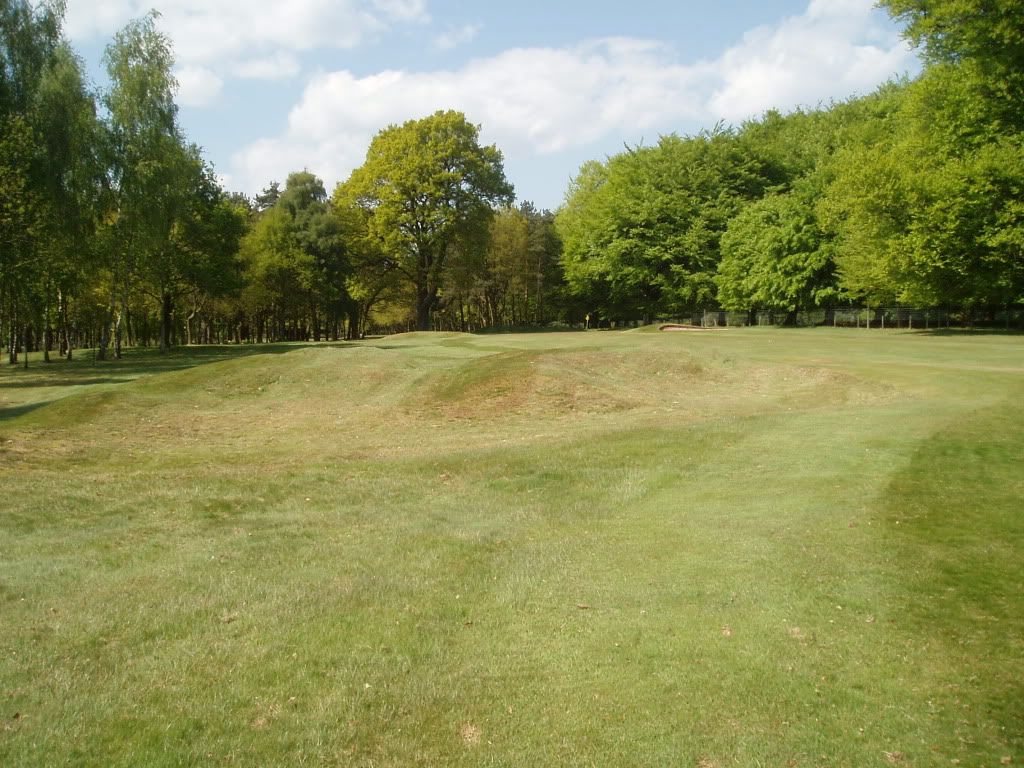
There are many of these earthworks awaiting off-line shots throughout the round. Some await stray drives or mishit second shots and a number cause problems around greens.
3. 200 yards par 3
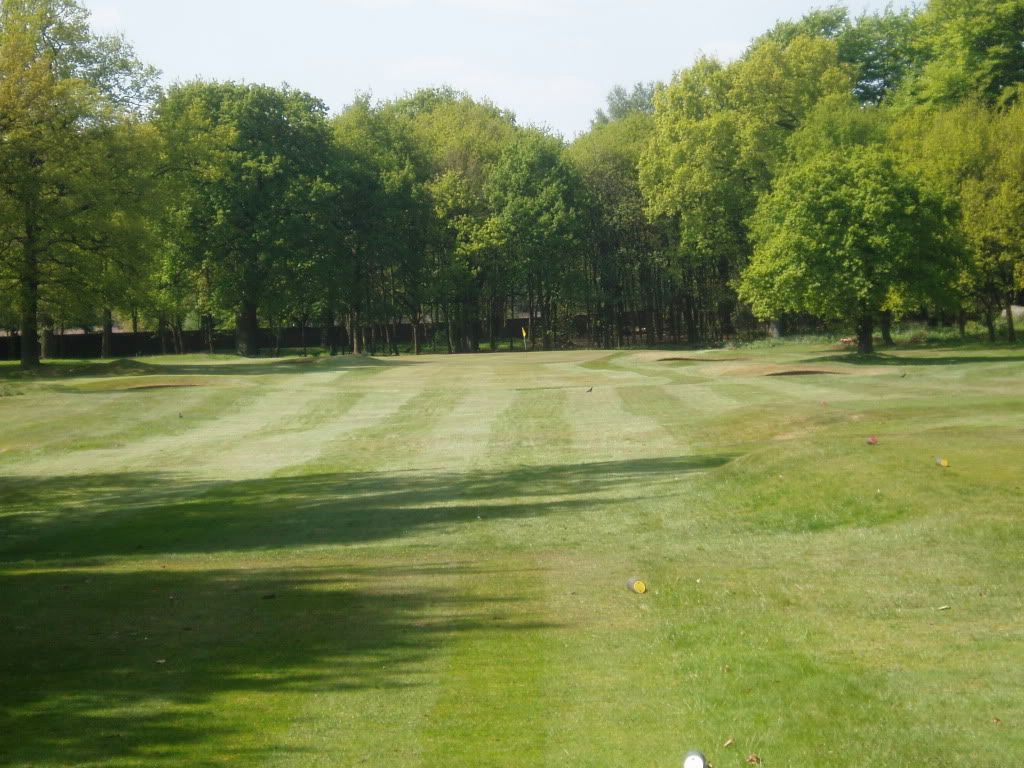
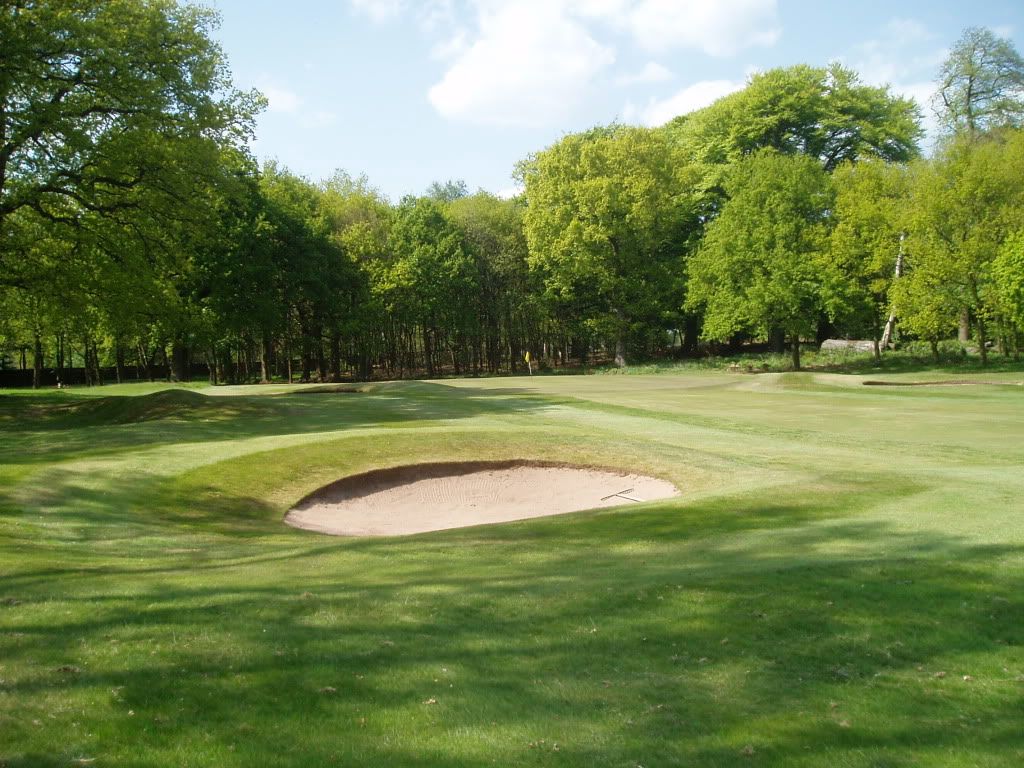
On seeing Speakman’s plan, Lowe suggested making this a longer hole, with a green close to the boundary beyond the present green. But Speakman’s hole was constructed. It seems innocent enough, on the flat. However, there is a succession of bunkers on either side of the landing area if you intend to play a pitch-and-run and the green is protected by bunkers and mounds in a fashion that becomes familiar as the round proceeds.
4. 383 yards par 4.
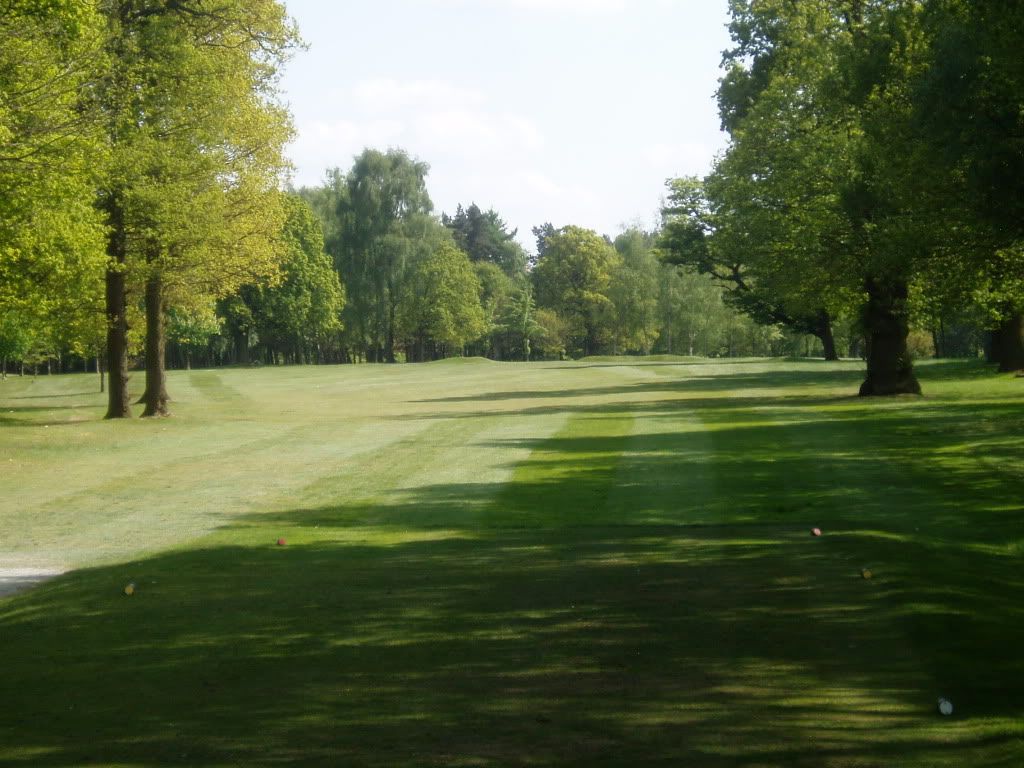
On a first visit it is not immediately obvious which line should be taken from the tee.
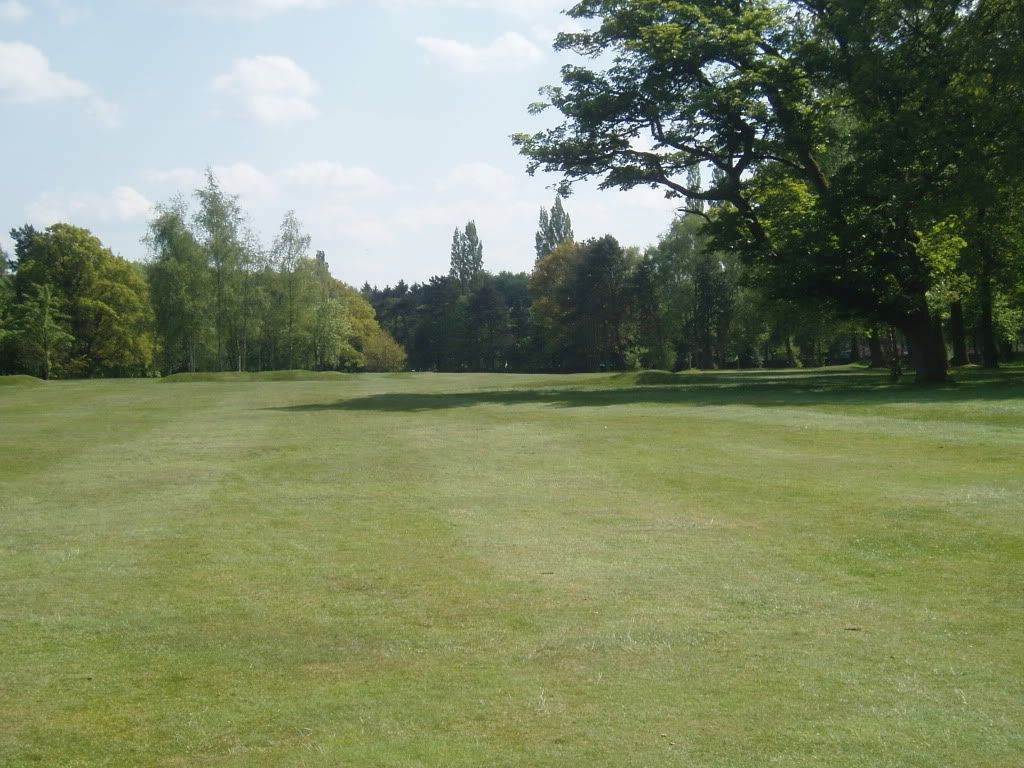
But as you make your way along the fairway all becomes plain, with a sight of a flag in the distance. It was lucky we did not get cut out by landing too close to the big tree on the right, on the inside angle of the dog-leg which is only now unfurling.
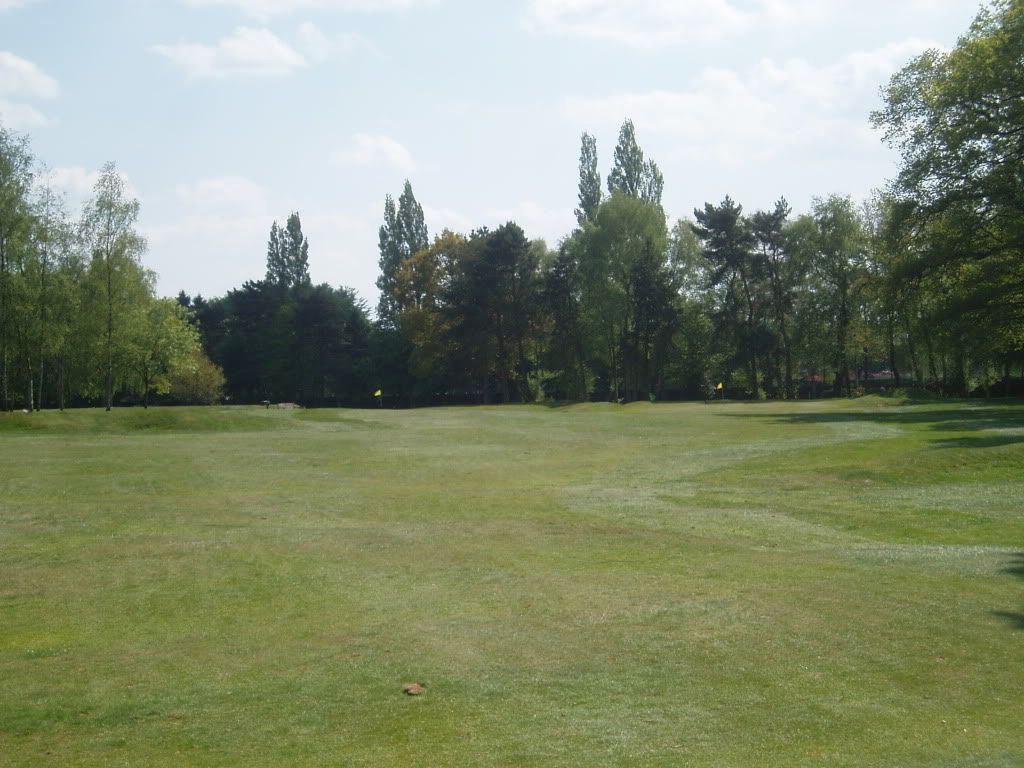
But that was not the correct flag! As you make further progress you discover another yellow flag further to the right. That is, indeed, the 4th. So, next time round you will ensure that you drive far enough and sufficiently away from the big tree to let you see the green. There are a few more embryonic earthworks to be avoided.
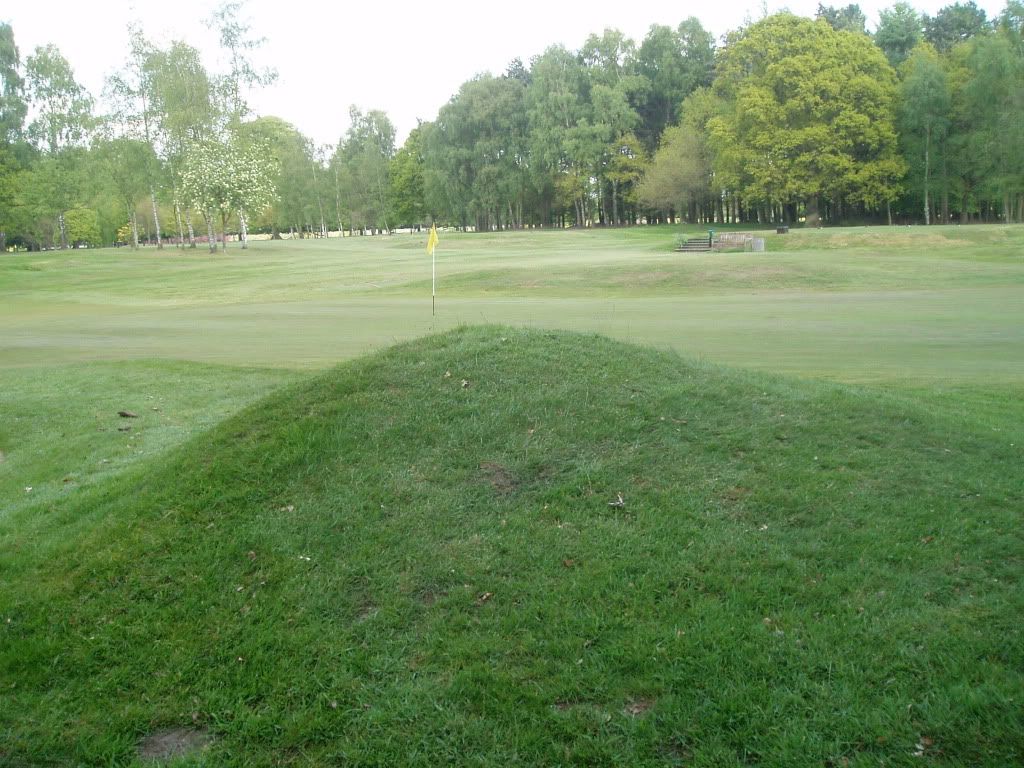
This anything-but-subtle mound lurks at the rear of the green.
5. 139 yards par 3.
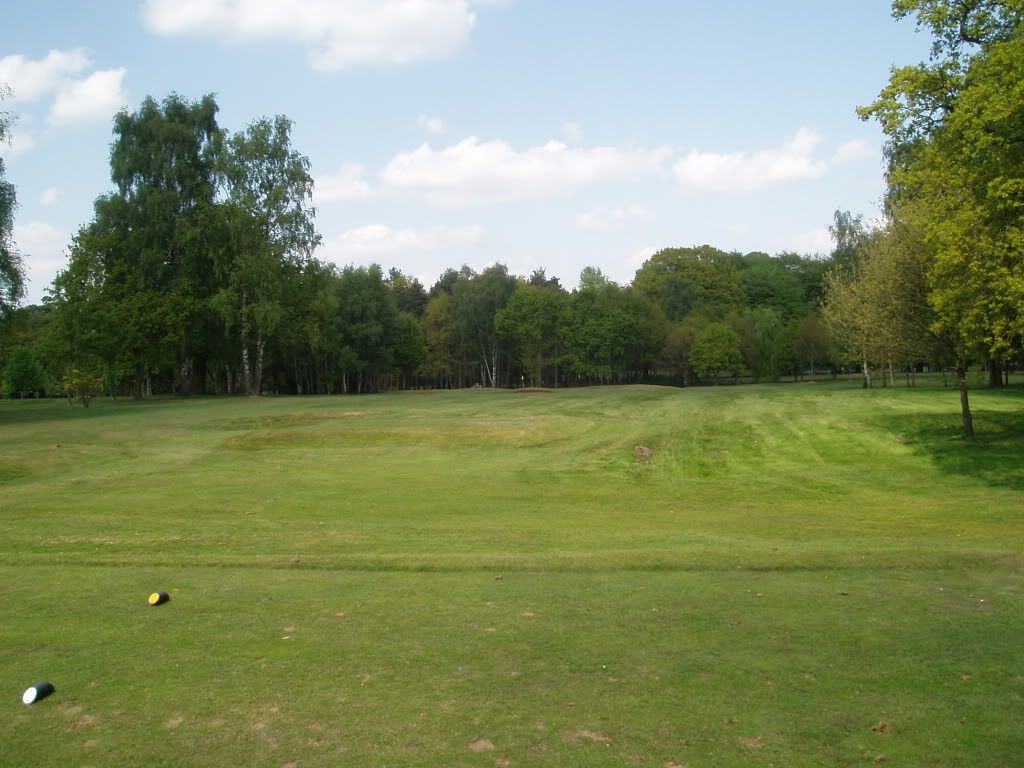
The tee is slightly raised but you cannot really see what dangers lie in wait on this diminutive short hole.
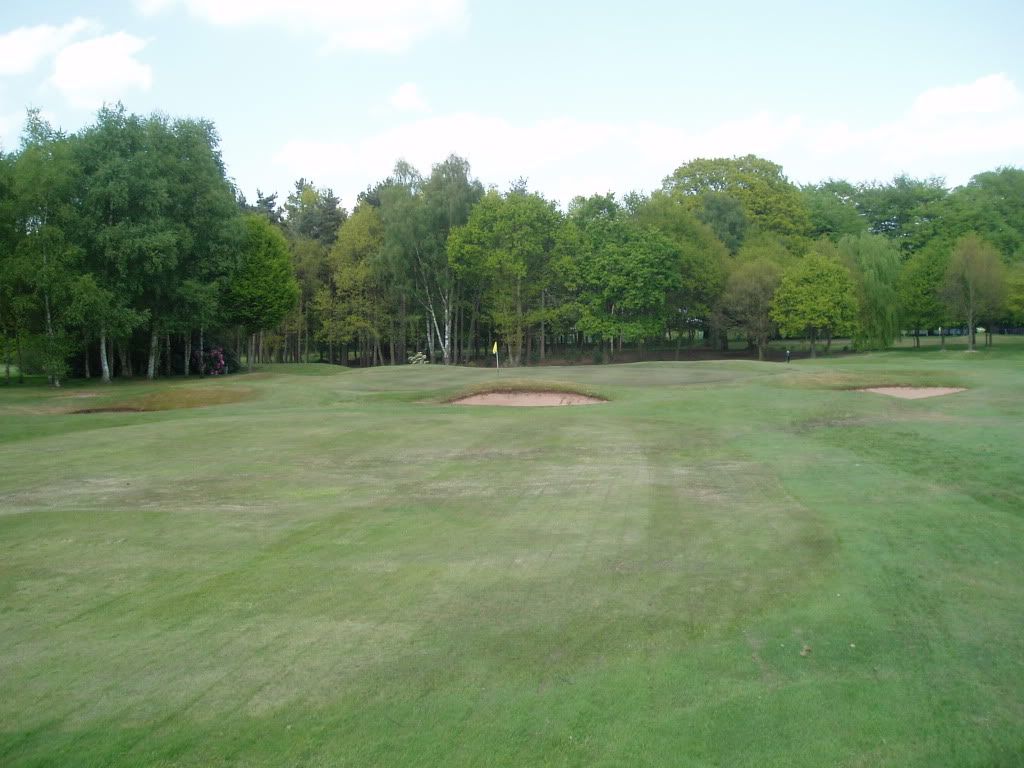
Bunkers begin to manifest themselves as you approach the green.
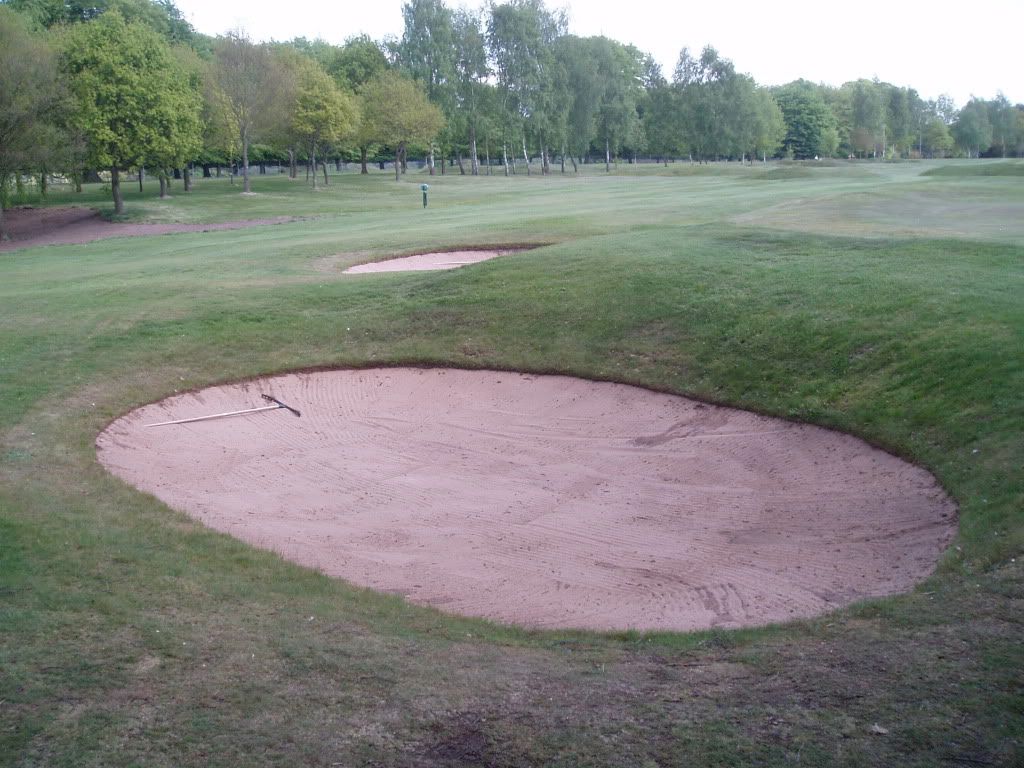
There are in fact six bunkers almost encircling the shallow putting surface. It requires finesse to hit and hold this green.
6. 492 yards par 5.
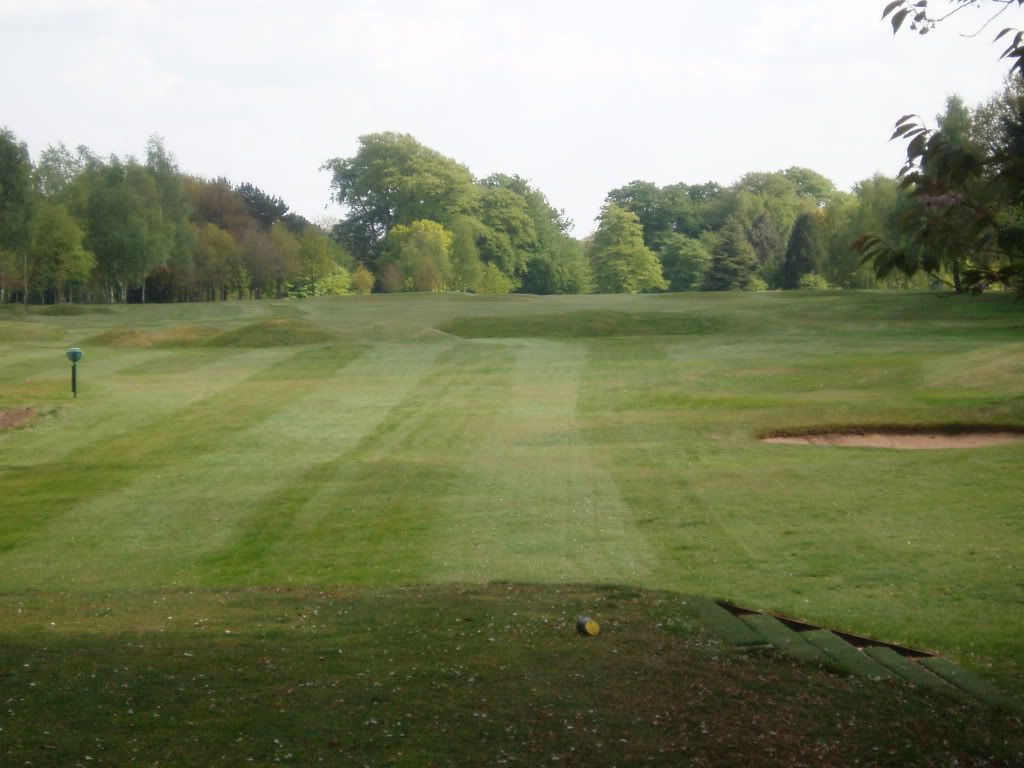
This should provide a birdie opportunity to the good player.
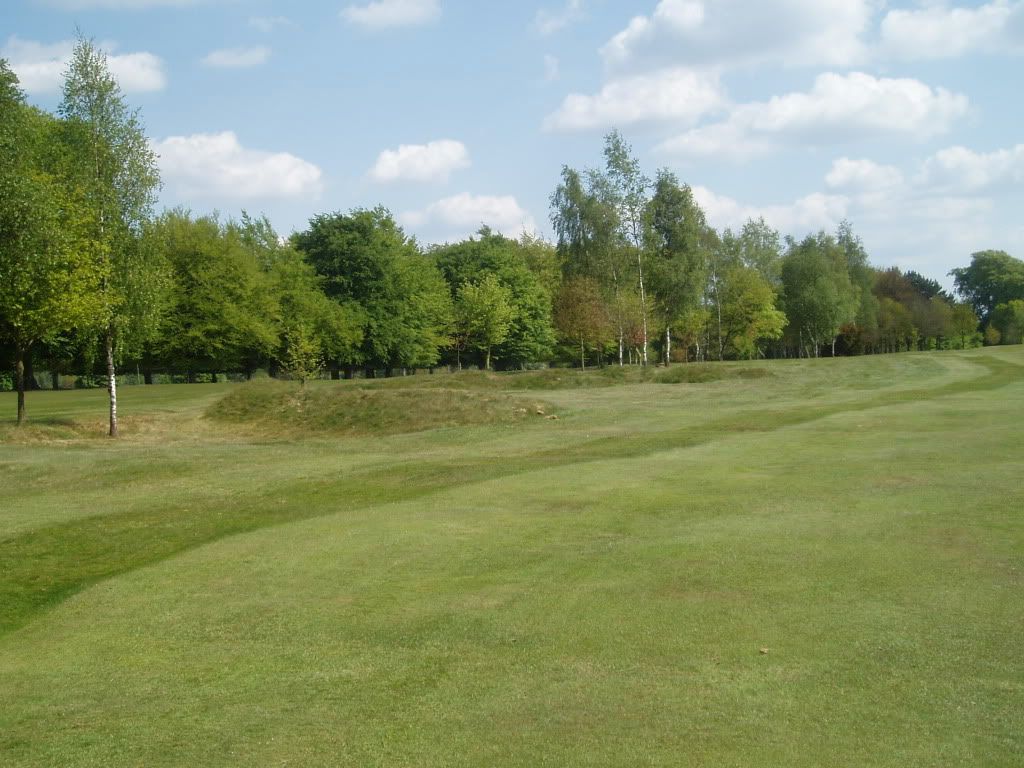
For the players of my inability there are plenty of mini Alps in which to perish.
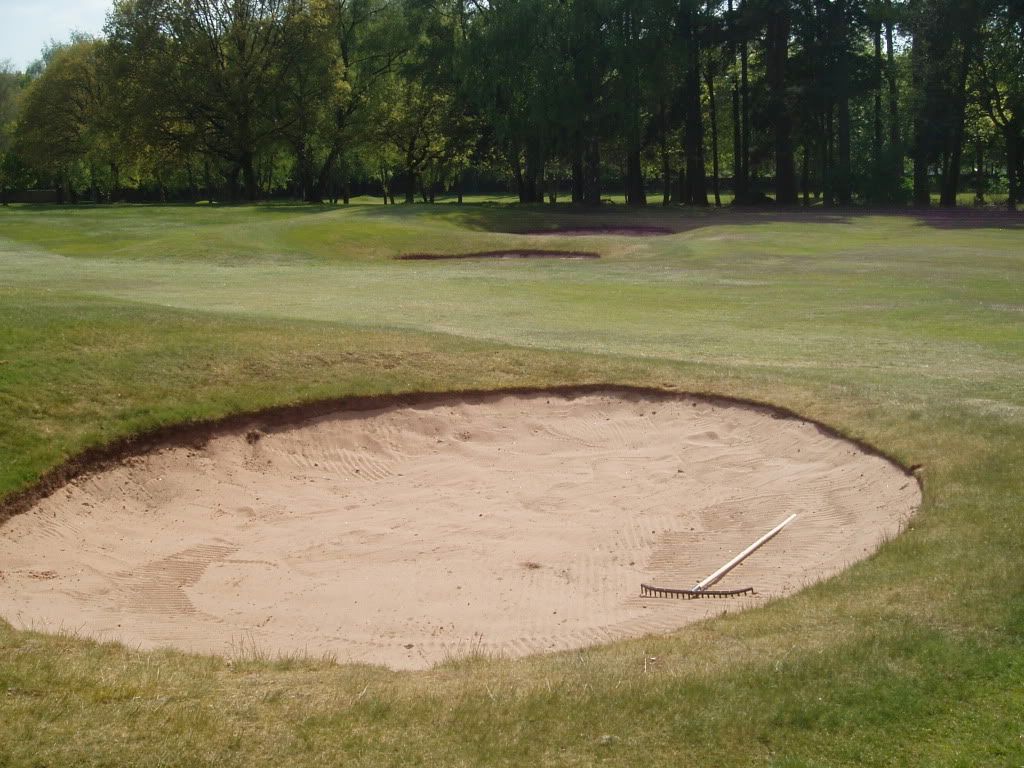
Four bunkers, effectively a V-shaped string of cross-bunkers, interrupt the fairway where many of us weaklings are likely to hit our second shots.
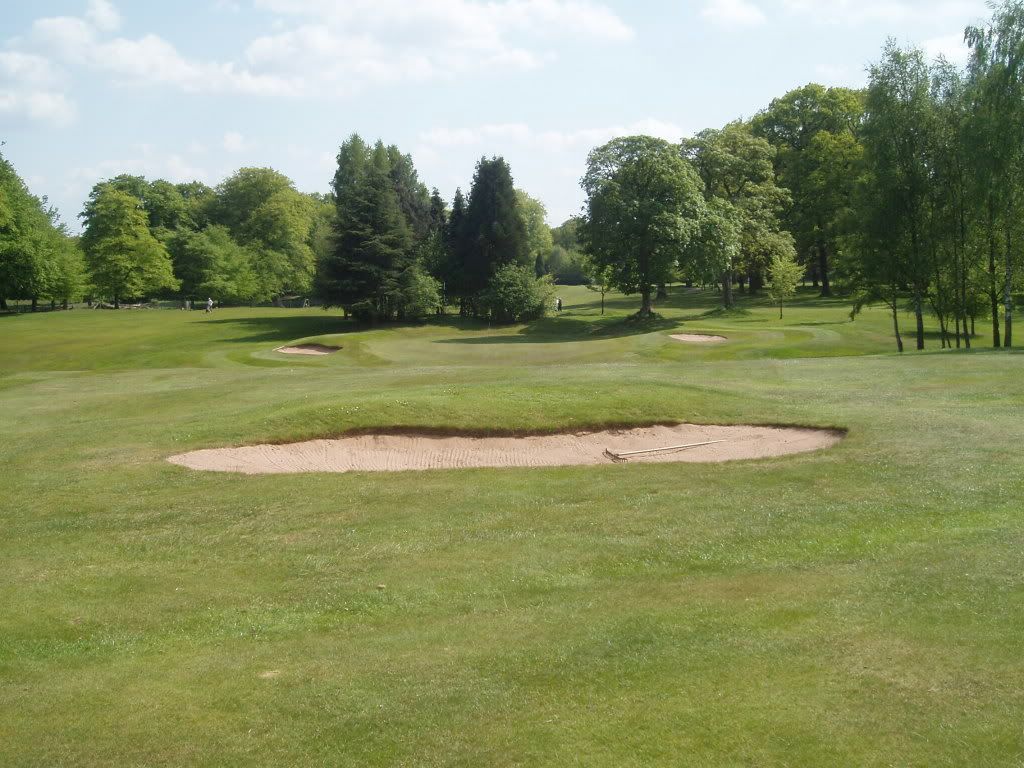
So far the fairway has been trundling along on the flat. It is difficult to make out the features such as bunkers from afar. This little trap awaits the unwary who sailed happily over the cross bunkers but will not have the distance to make the green.
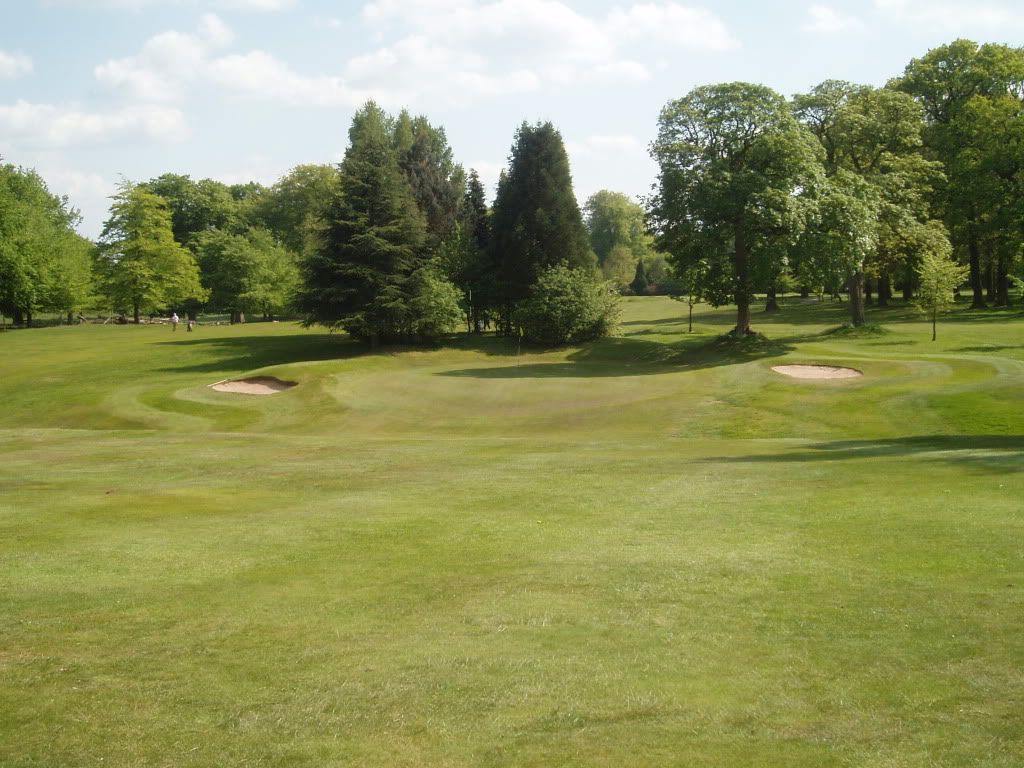
The green lies on the upslope on the far side of the gully you cleared on your opening drive. The putting surface is on quite a slope, as you can see. Those trees beyond the green are for the protection of those putting. They are very much in range of a pulled drive from the 1st tee.
7. 317 yards par 4.
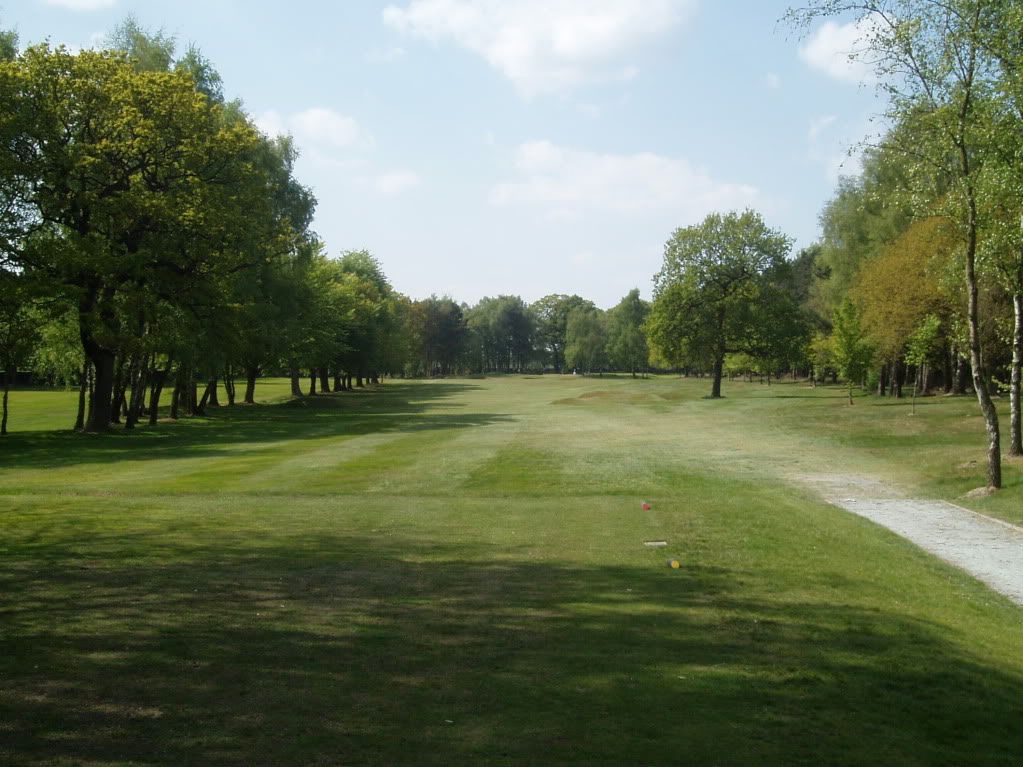
A short par 4 which might easily be driven – but not by me.
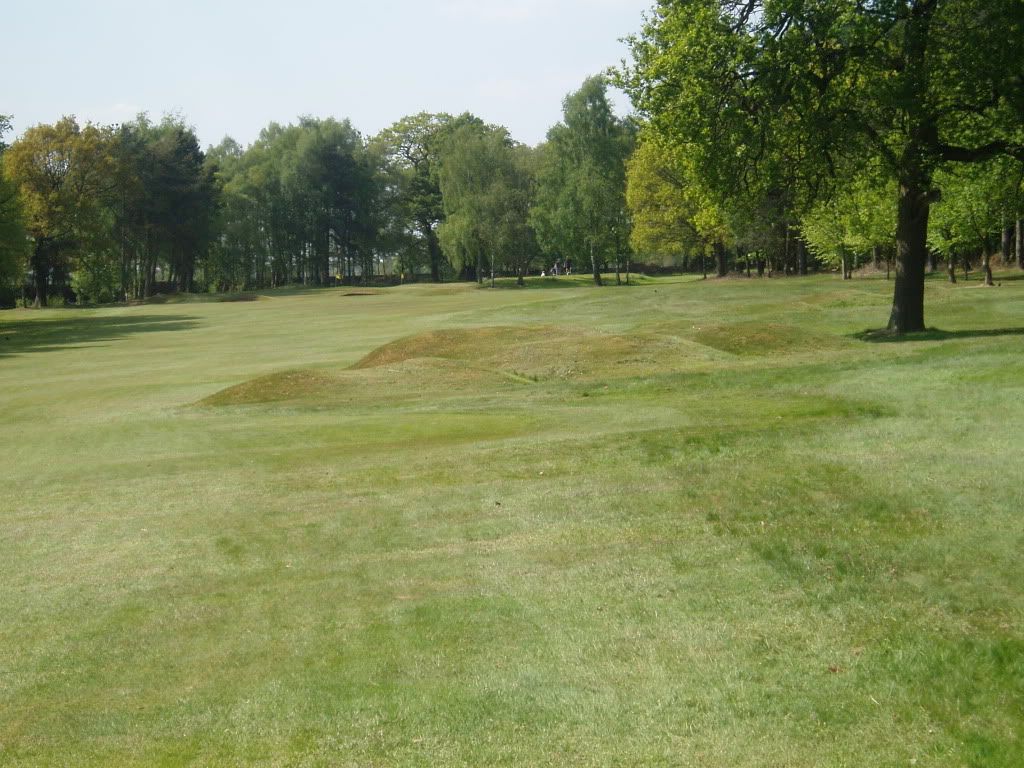
There await earthworks of this kind for a scuffed or feeble tee shot. They can make life quite uncomfortable for the inept player!
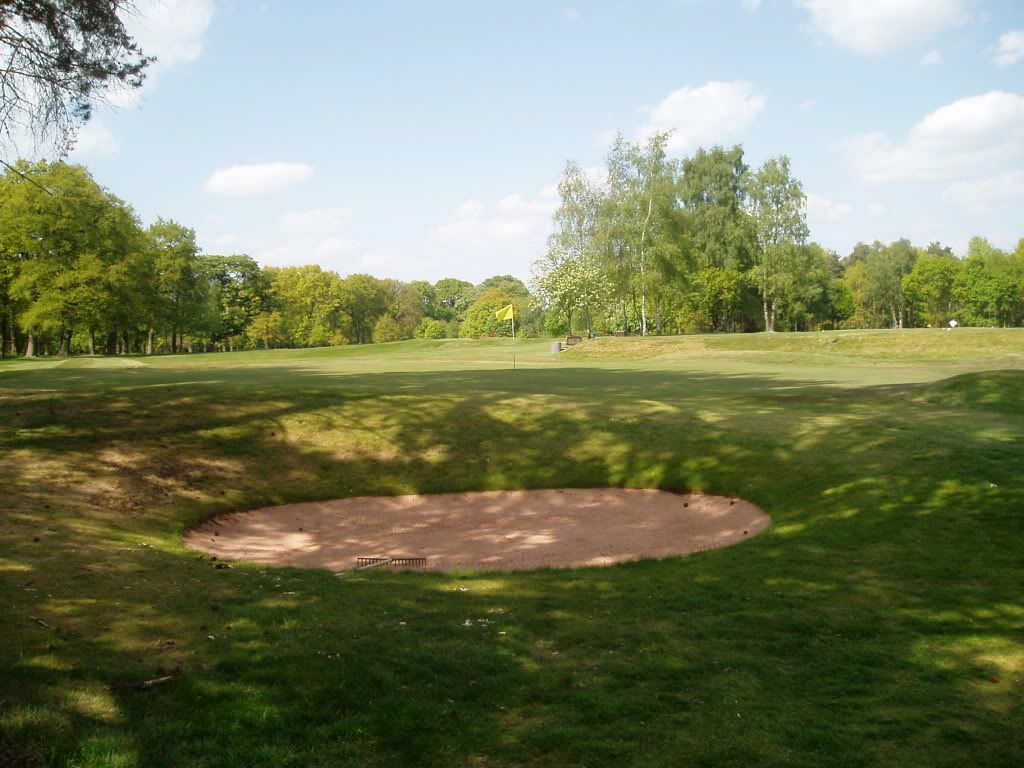
The green, which almost adjoins the 4th green, has plenty of tricky little humps and hollows to punish the errant.
8. 448 yards par 4.
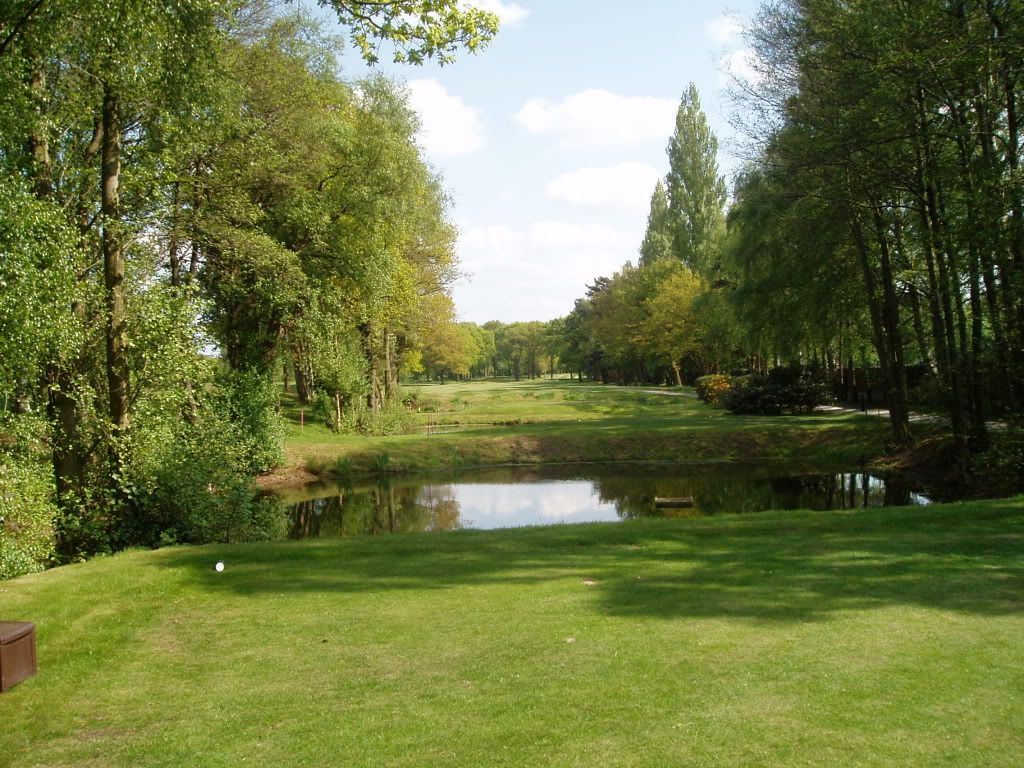
A powerful two-shot hole with the need for straightness from the tee.
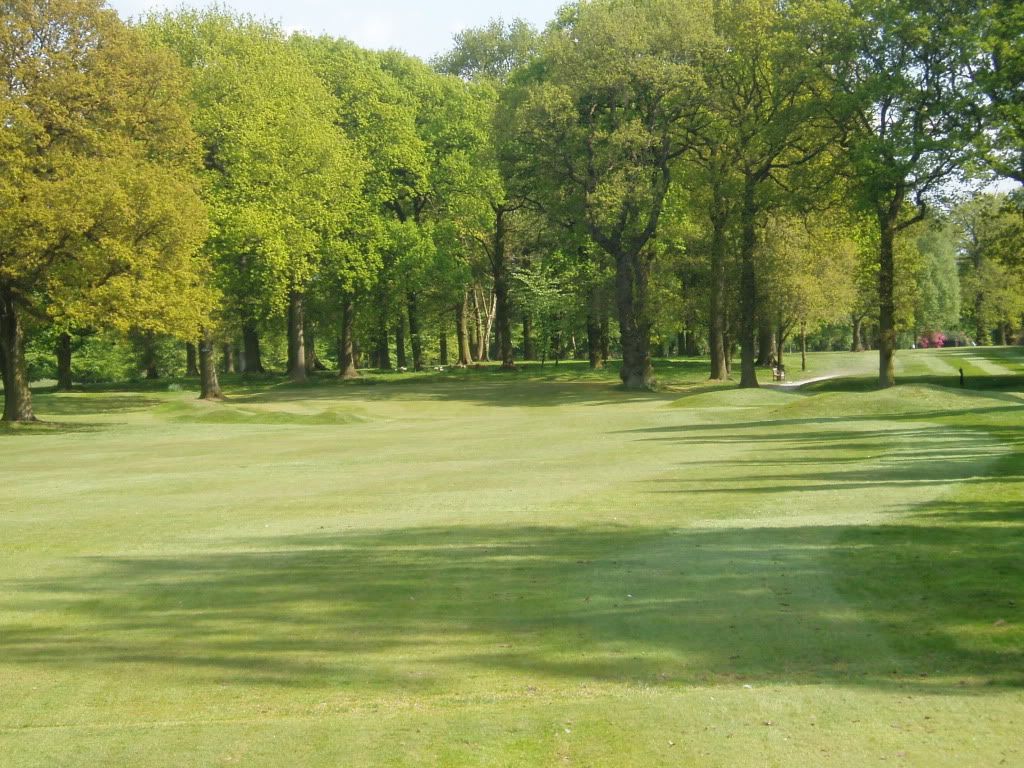
As on the 6th the target from afar is quite small and rises steeply from front to back
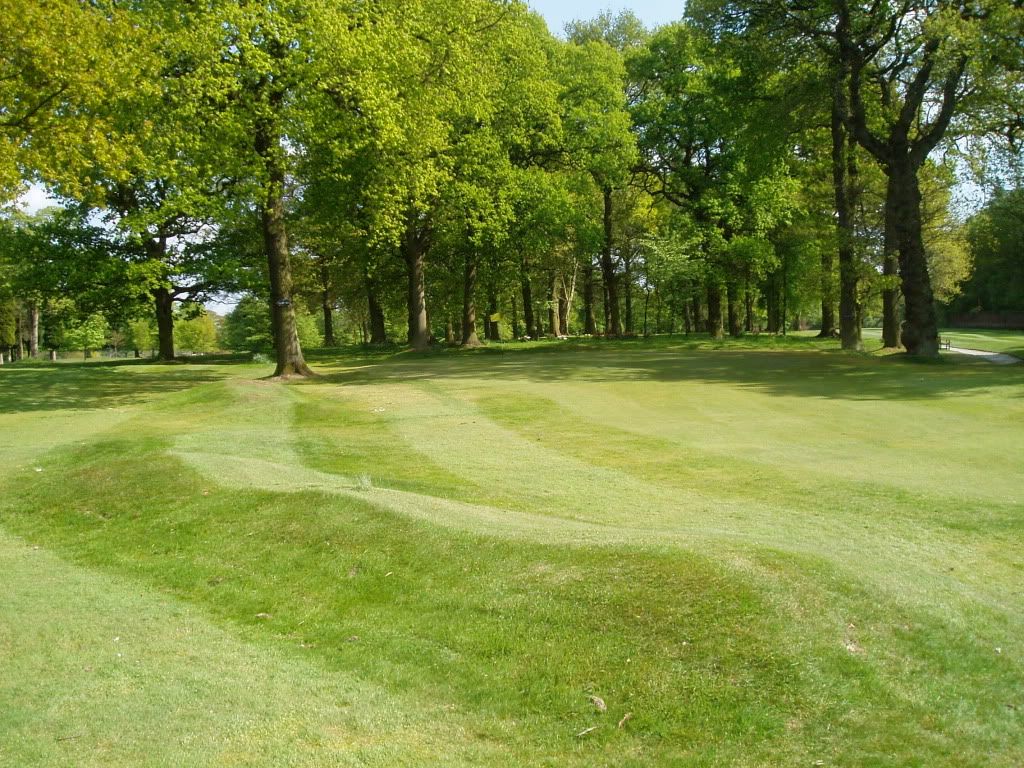
Earthwork banks once again play a part in the hole’s defences.
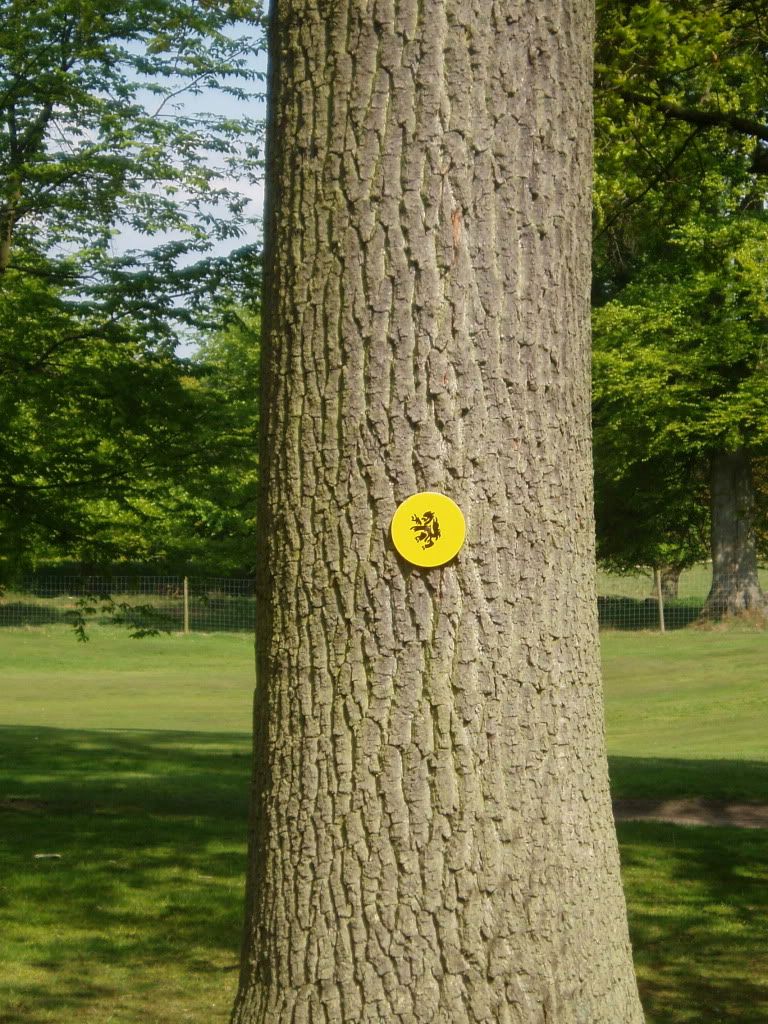
Markers such as this are used to indicate 150 yards to the centre of the green. There are also yellow spots in mid-fairway.
9. 311 yards par 4.
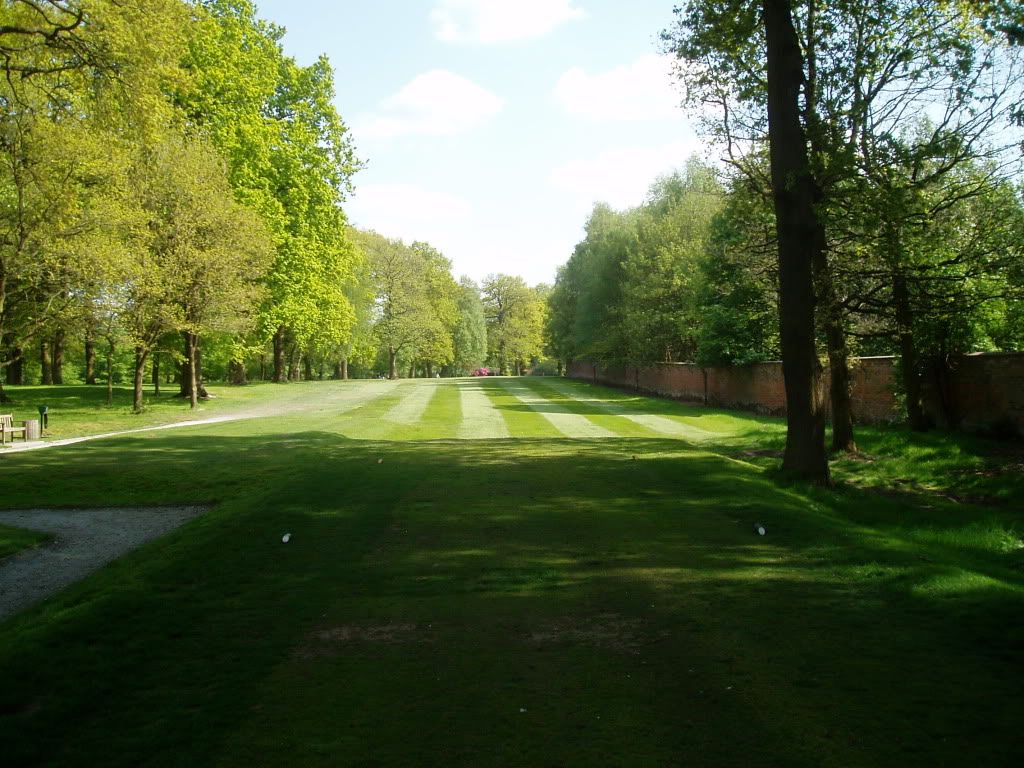
Claustrophobic!
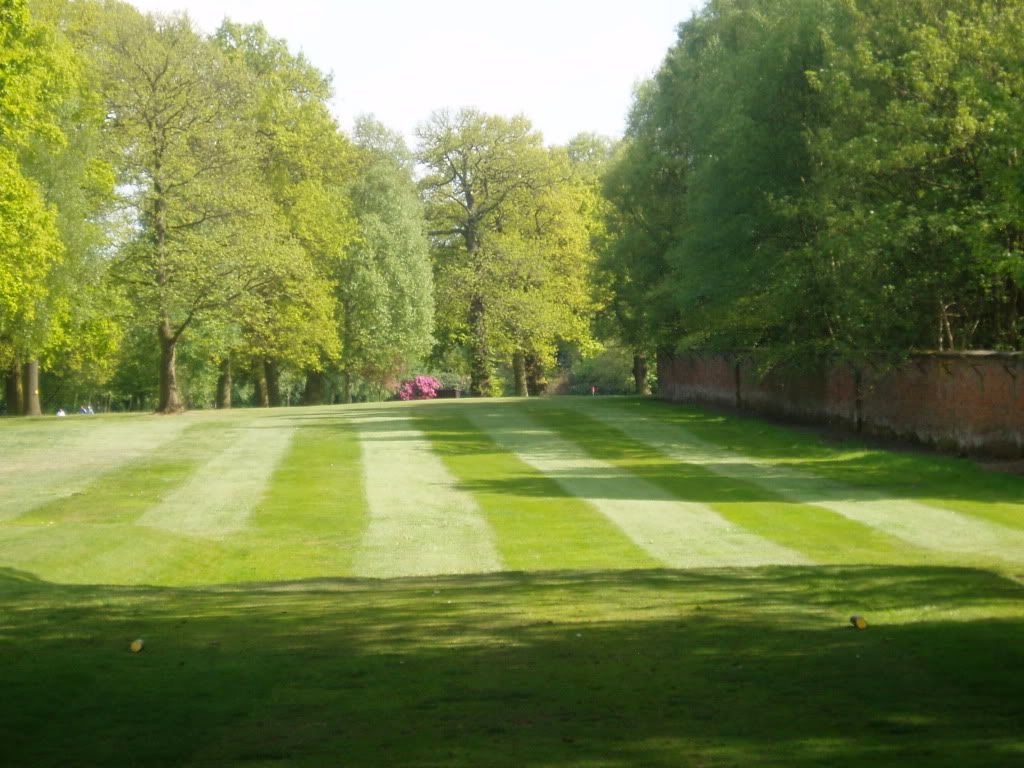
The narrow fairway bends round the estate wall, emphasizing the country-house nature of the course. You can just catch a glimpse of a flag above the fairway.
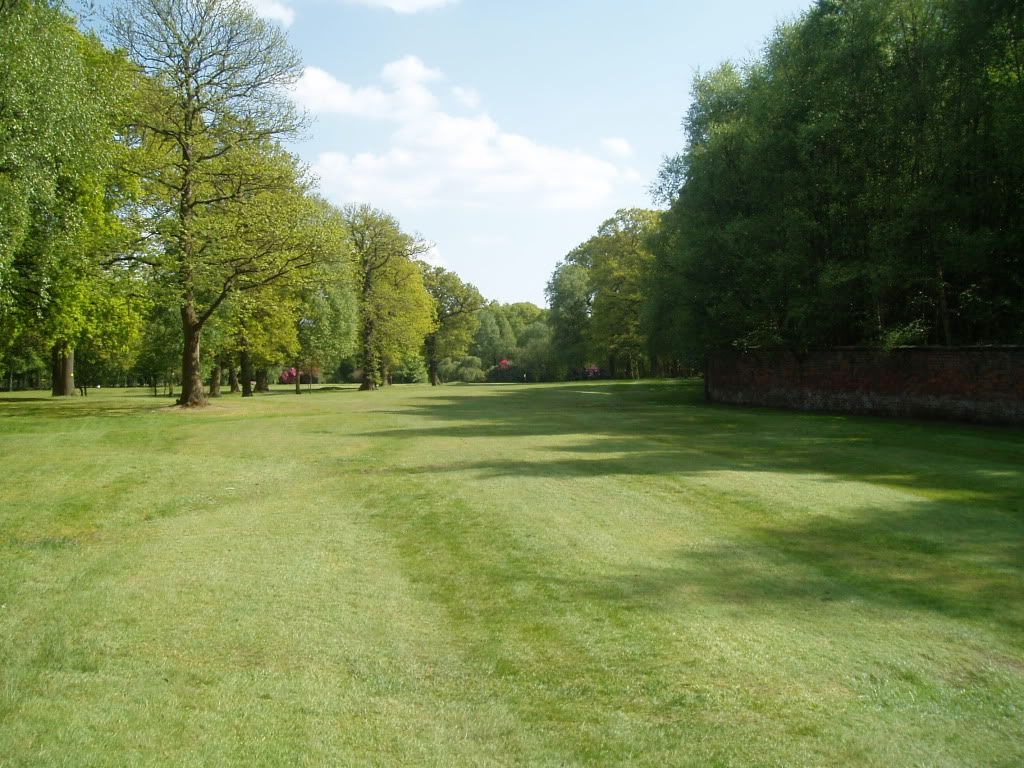
That flag was red! It is the 18th flag. The 9th flag is yellow.
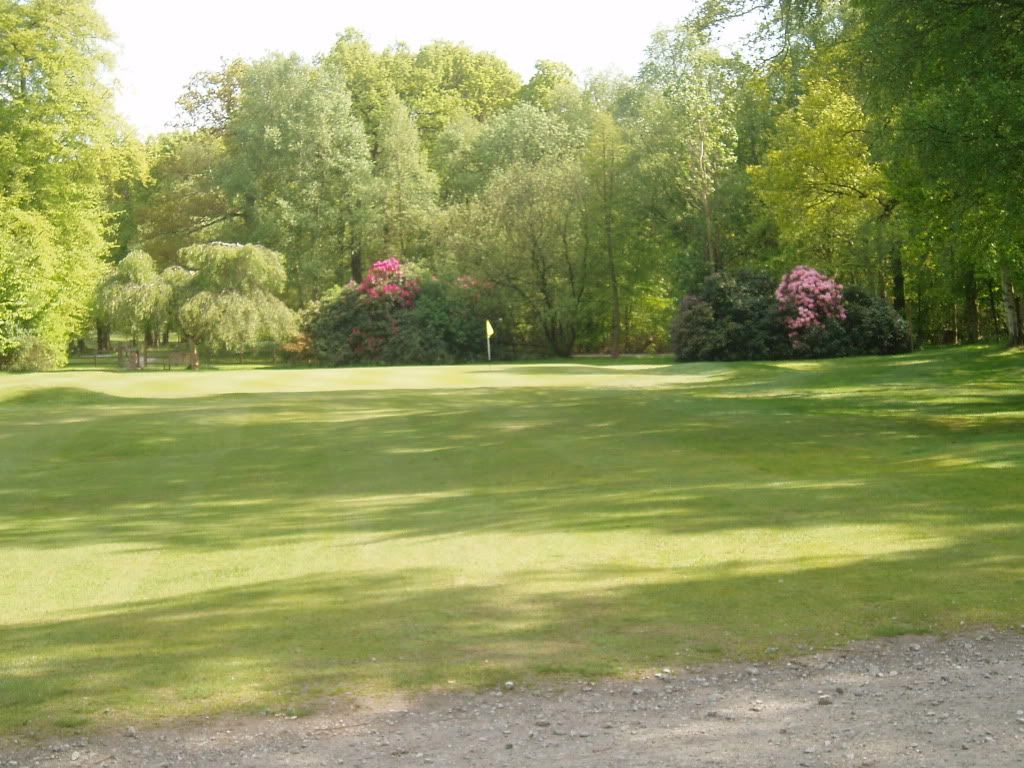
Whatever your golfing fate so far you have to admit that the surroundings are special. And now we set off on the same holes played as the back nine – a little wiser, perhaps!
18. 365 yards par 4.
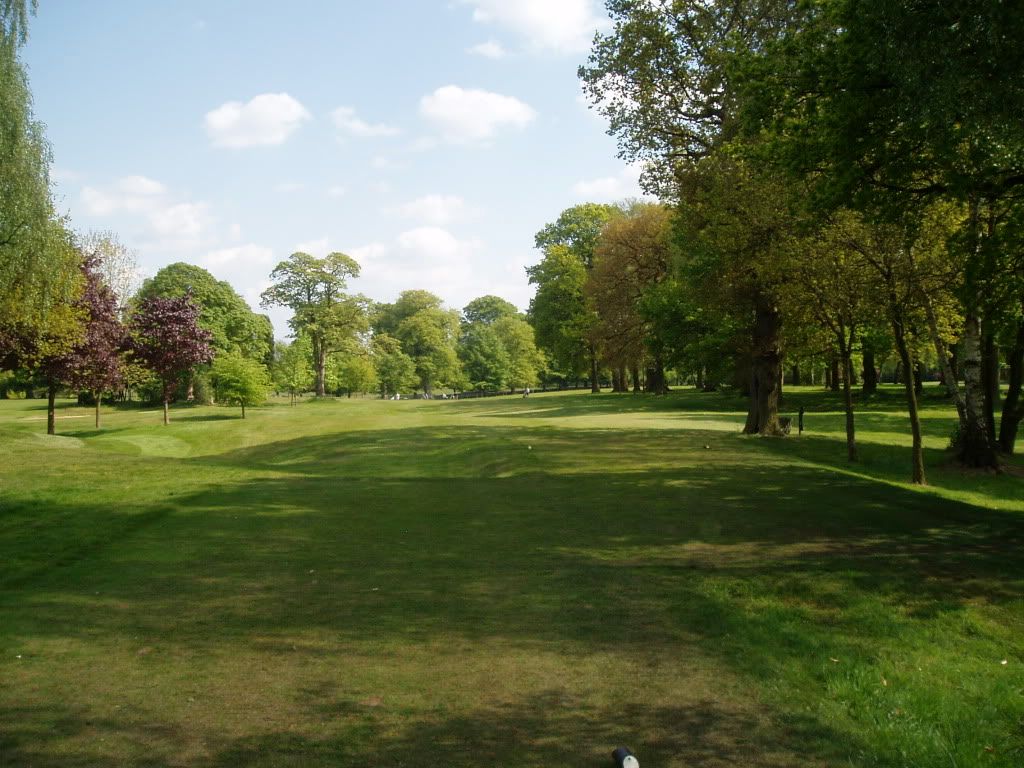
The 9th tee was to the right of the 8th green. The 18th tee is to the left of the previous green and a little back of it. You now have on your right the trees which had formed the left side of the 9th.

This hole is a right-handed dog-leg and you do not want to finish cut off by trees such as this.
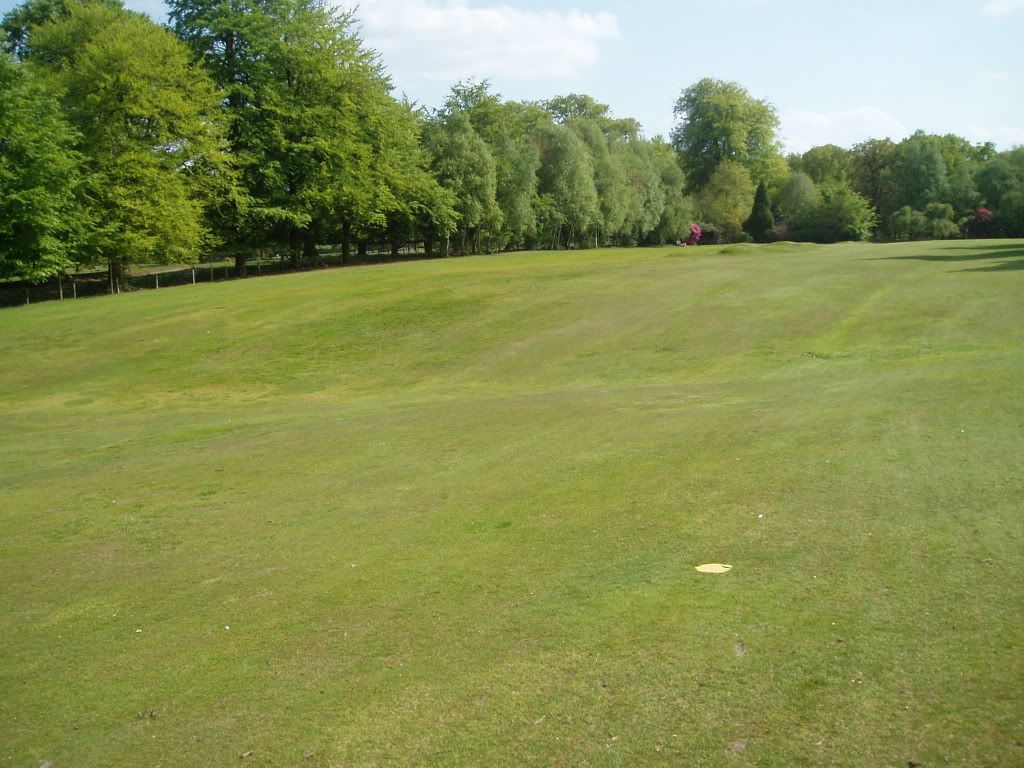
However if you drive to the left, onto a broad fairway shared with the 1st, the fairway leans significantly to the left making the hole play longer.
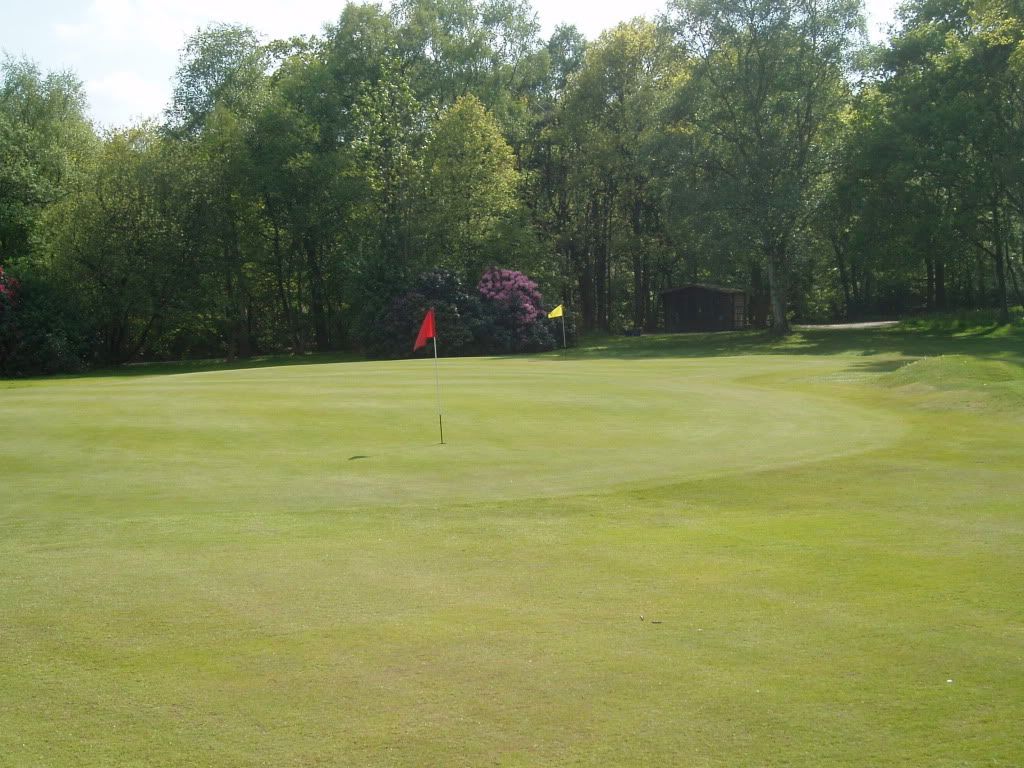
As it transpires, this is a double green shared with the 9th.
A lawn tennis court in the gardens of an old country vicarage is not Wimbledon, neither is Knutsford’s golf course Royal Lytham, but sometimes the setting adds enormously to the enjoyment. That is why I enjoy an occasional round at Knutsford.